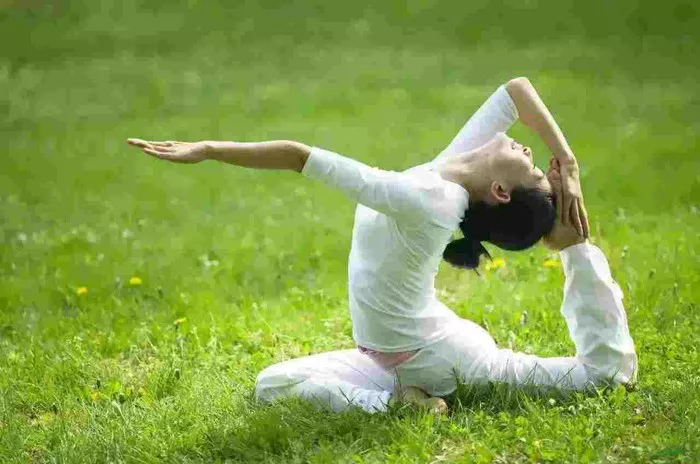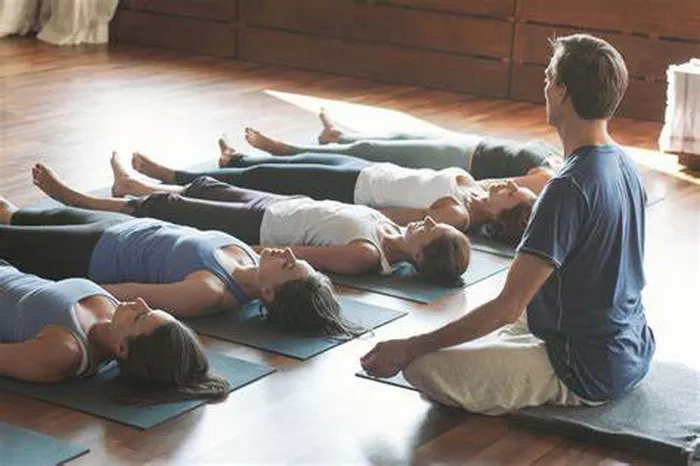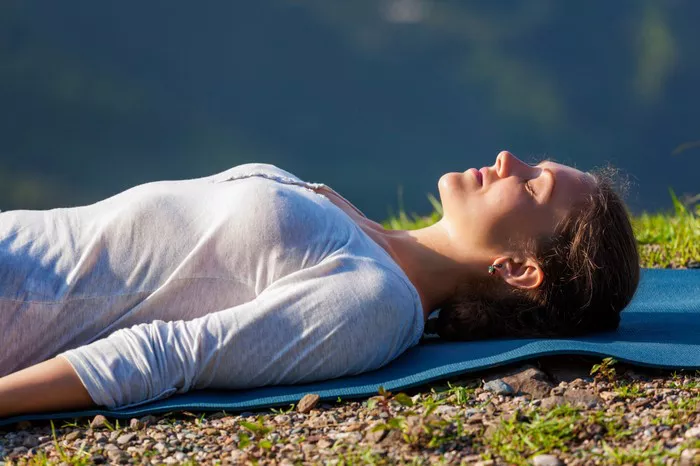In a world brimming with stressors, anxiety has become an all – too – common companion for many. As people seek effective ways to manage this mental burden, Ashtanga Yoga emerges as a practice with potential benefits for alleviating anxiety. This article will explore in detail whether Ashtanga Yoga is indeed good for anxiety, examining its various aspects and how they interact with the mechanisms of anxiety.
The Breath – Centric Approach: Ujjayi Pranayama’s Soothing Power
At the heart of Ashtanga Yoga lies Ujjayi Pranayama, a breathing technique that holds significant promise in the fight against anxiety. Ujjayi breath involves a slow, deep inhalation and exhalation through constricted vocal cords, creating a soft, ocean – like sound. This controlled breathing pattern has multiple effects on the body and mind.
Physiologically, Ujjayi breath stimulates the parasympathetic nervous system, which is responsible for the “rest and digest” response. When activated, it counteracts the fight – or – flight response that is often in overdrive during states of anxiety. By slowing down the heart rate, reducing blood pressure, and decreasing the production of stress hormones such as cortisol, Ujjayi breath helps to calm the body’s physical manifestations of anxiety.
Mentally, the rhythmic nature of Ujjayi breath serves as an anchor for the mind. As practitioners focus on the sound and sensation of the breath, it draws their attention away from anxious thoughts and into the present moment. This mindfulness aspect of Ujjayi breath in Ashtanga Yoga is crucial, as it breaks the cycle of rumination that often fuels anxiety.
The Flow of Movement: Vinyasa’s Rhythmic Distraction
The vinyasa flow in Ashtanga Yoga is another key element that can be beneficial for anxiety. Vinyasa is the seamless transition between postures, synchronized with the breath. This continuous movement creates a rhythm that demands the full attention of the practitioner.
When engaged in the vinyasa flow, the mind is occupied with coordinating the body’s movements, maintaining balance, and aligning with the breath. This intense focus acts as a form of active meditation, diverting the mind from anxious ruminations. The repetitive nature of the vinyasa sequence also has a soothing effect, much like the repetitive motion of knitting or walking, which can have a calming influence on the nervous system.
Moreover, the physical exertion involved in the vinyasa flow leads to the release of endorphins. These natural mood – elevating chemicals in the brain can help to improve overall well – being and reduce feelings of anxiety. The combination of physical activity and mental focus in Ashtanga’s vinyasa flow provides a holistic approach to managing anxiety.
The Discipline of Routine: Building Resilience Through Consistency
Ashtanga Yoga follows a set sequence of postures, which requires regular practice. This disciplined routine can play a significant role in reducing anxiety. Establishing a regular yoga practice creates a sense of structure and predictability in one’s life.
When individuals engage in Ashtanga Yoga on a consistent basis, they develop a sense of accomplishment and self – control. The ability to commit to and complete a challenging practice session builds confidence, which can translate into greater resilience in the face of life’s stressors. The routine nature of Ashtanga Yoga also provides a stable foundation in an otherwise unpredictable world, giving practitioners a sense of security and grounding.
The Inner Exploration: Svadhyaya’s Path to Self – Awareness
Svadhyaya, or self – study, is an integral part of Ashtanga Yoga. In the context of anxiety, Svadhyaya allows practitioners to gain a deeper understanding of their own thought patterns, emotional responses, and physical sensations related to anxiety.
During Ashtanga practice, as individuals focus on their bodies and breath, they become more attuned to the early signs of anxiety. This self – awareness enables them to recognize when anxious thoughts are starting to surface and take proactive steps to address them. By observing their reactions without judgment, practitioners can learn to respond to anxiety in a more measured and rational way, rather than being overwhelmed by it.
Furthermore, Svadhyaya in Ashtanga Yoga often extends to the study of yoga philosophy. Exploring concepts such as the nature of the mind and the impermanence of emotions can provide a broader perspective on anxiety, helping practitioners to view it as a passing state rather than an all – consuming condition.
The Ethical Foundation: Yamas and Niyamas’ Influence on Mental Well – being
The ethical principles of Yamas and Niyamas in Ashtanga Yoga can also have a positive impact on anxiety. The Yamas, which include principles like Ahimsa (non – violence), Satya (truthfulness), and Aparigraha (non – greed), encourage a more harmonious and compassionate way of living.
Practicing Ahimsa means treating oneself and others with kindness. In the context of anxiety, this can translate into being gentle with oneself during difficult emotional states, rather than engaging in self – criticism. Satya promotes honesty, which can help individuals confront the root causes of their anxiety rather than avoiding or denying them. Aparigraha, the principle of non – greed, can reduce feelings of lack and dissatisfaction, which are often underlying factors in anxiety.
The Niyamas, such as Santosha (contentment) and Ishvara Pranidhana (surrender to a higher power), also offer valuable perspectives. Santosha helps practitioners find contentment in the present moment, reducing the anxiety associated with constantly striving for more. Ishvara Pranidhana encourages a sense of surrender, which can relieve the burden of trying to control every aspect of life, a common source of anxiety.
The Focused Gaze: Drishti’s Role in Centering the Mind
Drishti, the practice of focusing the gaze in Ashtanga Yoga, contributes to anxiety management by enhancing concentration and mental focus. Each posture in Ashtanga is associated with a specific Drishti point.
When the gaze is fixed on a Drishti point, it helps to calm the mind and reduce distractions. This focused attention acts as a form of mental discipline, training the mind to stay present and not wander into anxious thoughts. By centering the mind through Drishti, practitioners can experience a greater sense of mental clarity and stability, which are essential for managing anxiety.
Conclusion
Ashtanga Yoga offers a multi – faceted approach that can be highly beneficial for anxiety. Through its breath – centric techniques, dynamic vinyasa flow, disciplined routine, emphasis on self – awareness, ethical principles, and focused gaze, Ashtanga Yoga addresses both the physical and mental aspects of anxiety. It stimulates the body’s relaxation response, diverts the mind from anxious thoughts, builds resilience, promotes self – understanding, and encourages a more balanced and ethical way of living.






















